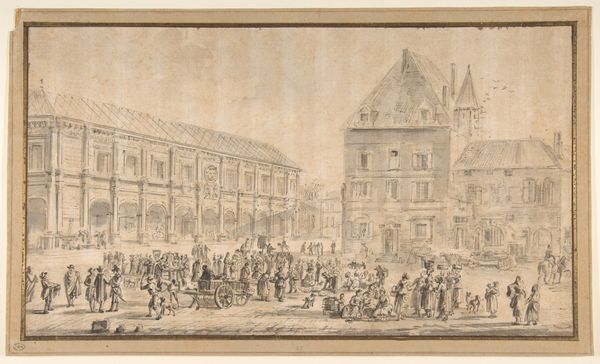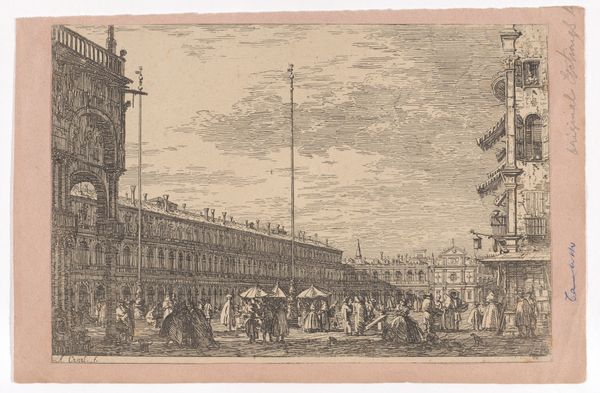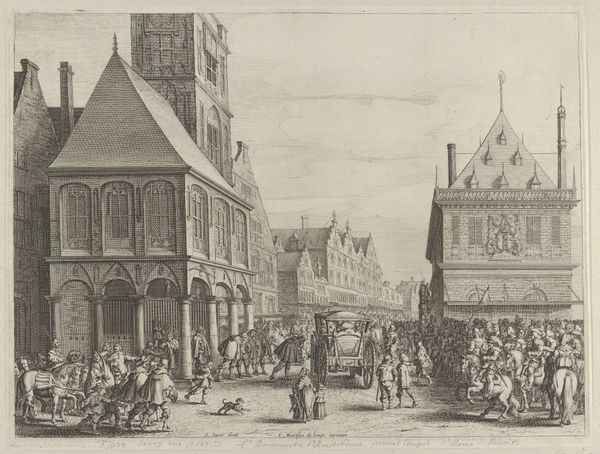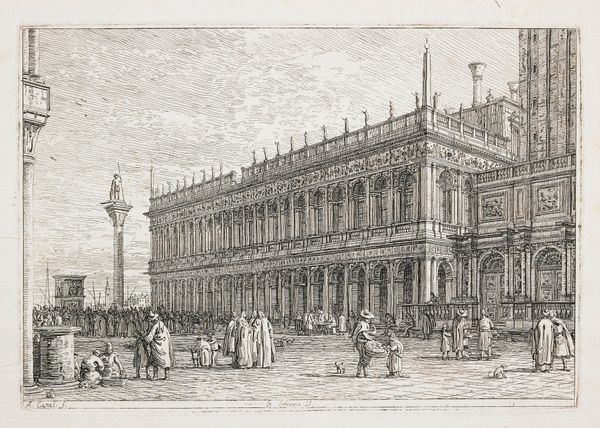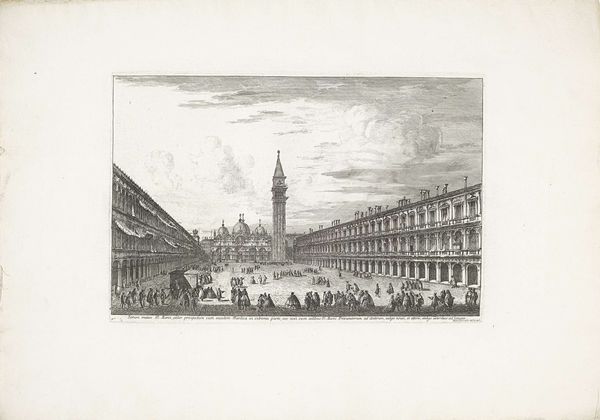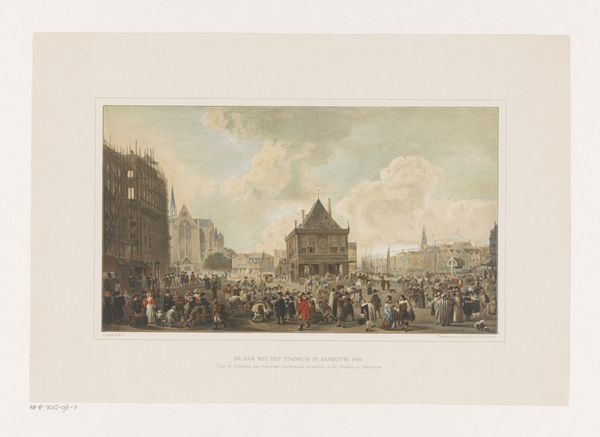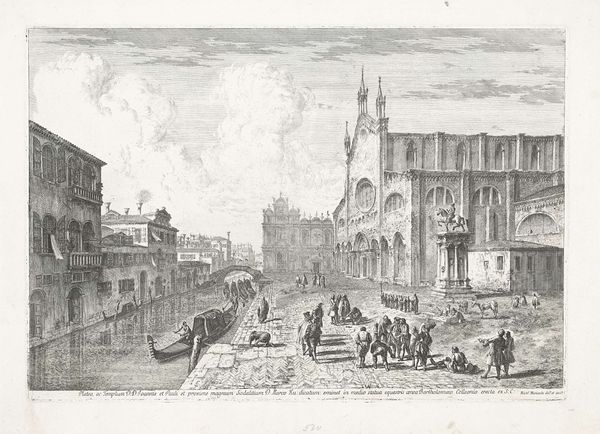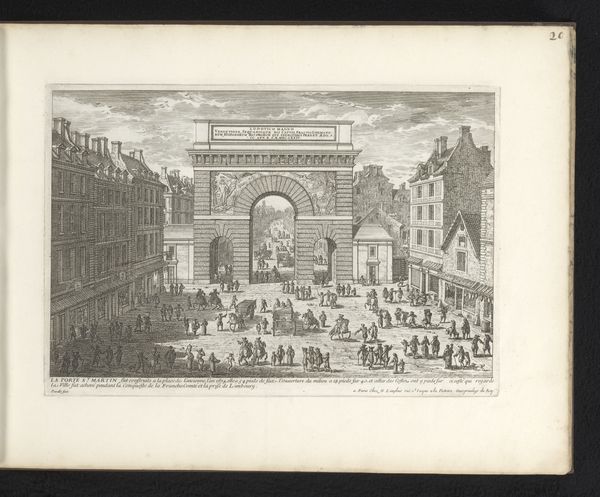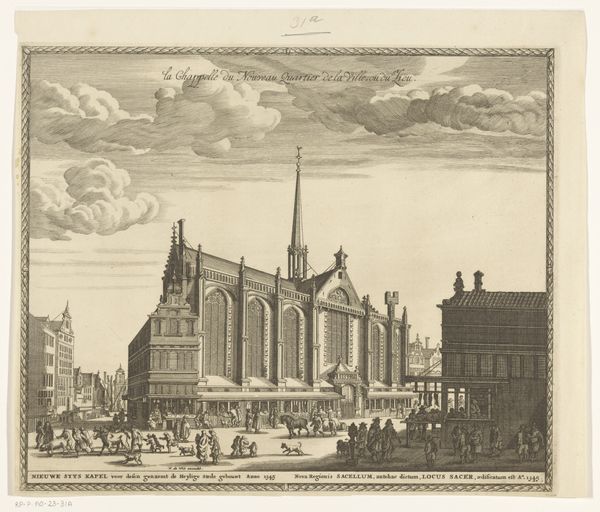
La Piera del Bando (The Proclamation Stone 1740 - 1745
0:00
0:00
print, etching
#
architectural sketch
#
landscape illustration sketch
# print
#
pen sketch
#
etching
#
pencil sketch
#
incomplete sketchy
#
etching
#
sketchwork
#
pen-ink sketch
#
pen work
#
italy
#
watercolor
Dimensions: 5 11/16 x 8 1/4 in. (14.45 x 20.96 cm) (plate)
Copyright: Public Domain
This is Canaletto’s etching, "La Piera del Bando," a study in lines and textures depicting Venice's proclamation stone. Notice how the density of etched lines shapes the Doge’s Palace on the left, a mass of intricate details suggesting opulence. The composition uses linear perspective, guiding our eye from the bustling foreground to the distant horizon, punctuated by the iconic columns of San Marco. Here Canaletto employs a visual syntax of architectural elements. These forms are not merely representational; they function as signs within a semiotic structure. The palace signifies power, the square denotes public space, and the columns act as historical markers. The etching’s strength lies in its structural clarity. The lines, though delicate, create a solid framework that conveys both the physical reality and the symbolic weight of Venice. This is not just a view; it’s a carefully constructed visual narrative, inviting us to decode its layers of meaning.
Comments
minneapolisinstituteofart almost 2 years ago
⋮
At left, near the portico of St. Mark’s Basilica, a man stands on a short, stout column—the Proclamation Stone, a fragment of ancient porphyry brought back to Venice from Syria during the Fourth Crusade (1202-4). He is the comandador, who reads out legal announcements to the public. The building with the long facade is the Doge’s palace, the seat of Venetian government. In the distance, we see the church of S. Giorgio Maggiore and its tower. The two columns bear statues representing the city’s patron saints: a lion for Mark, and a warrior for Theodore.
Join the conversation
Join millions of artists and users on Artera today and experience the ultimate creative platform.


